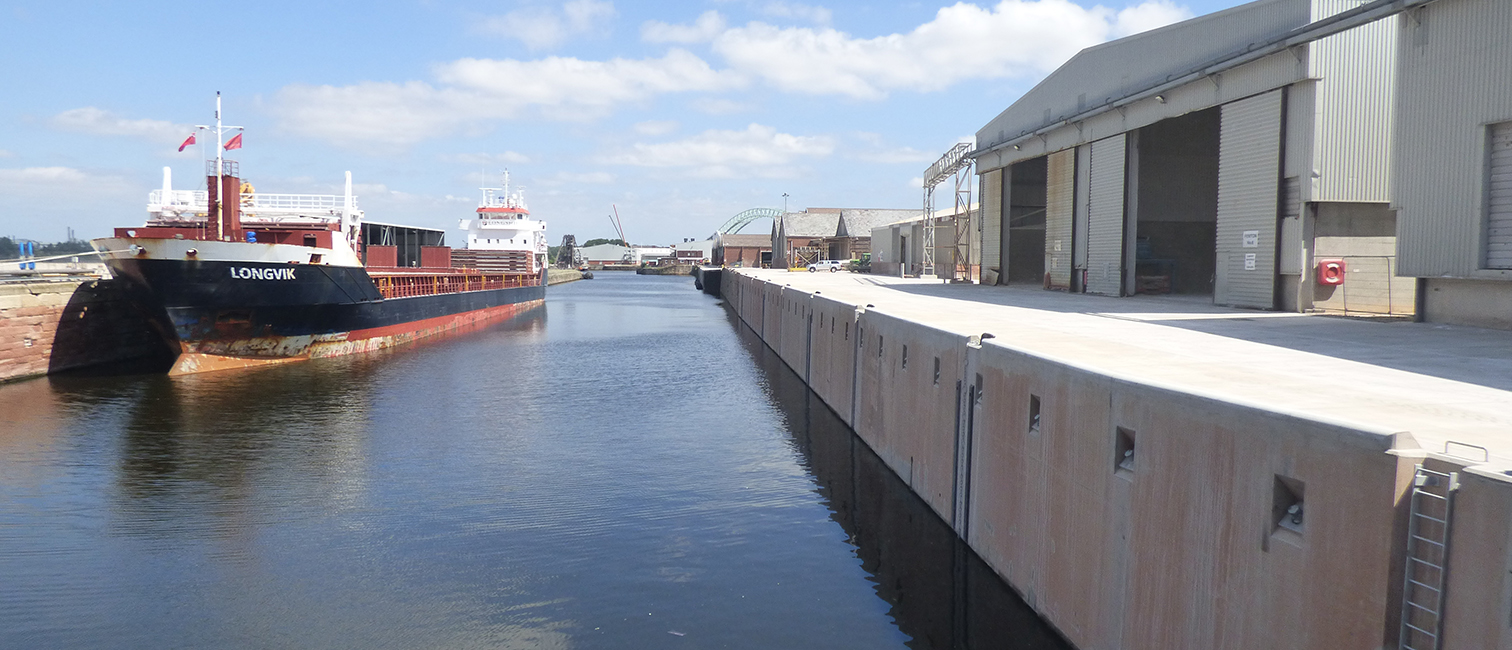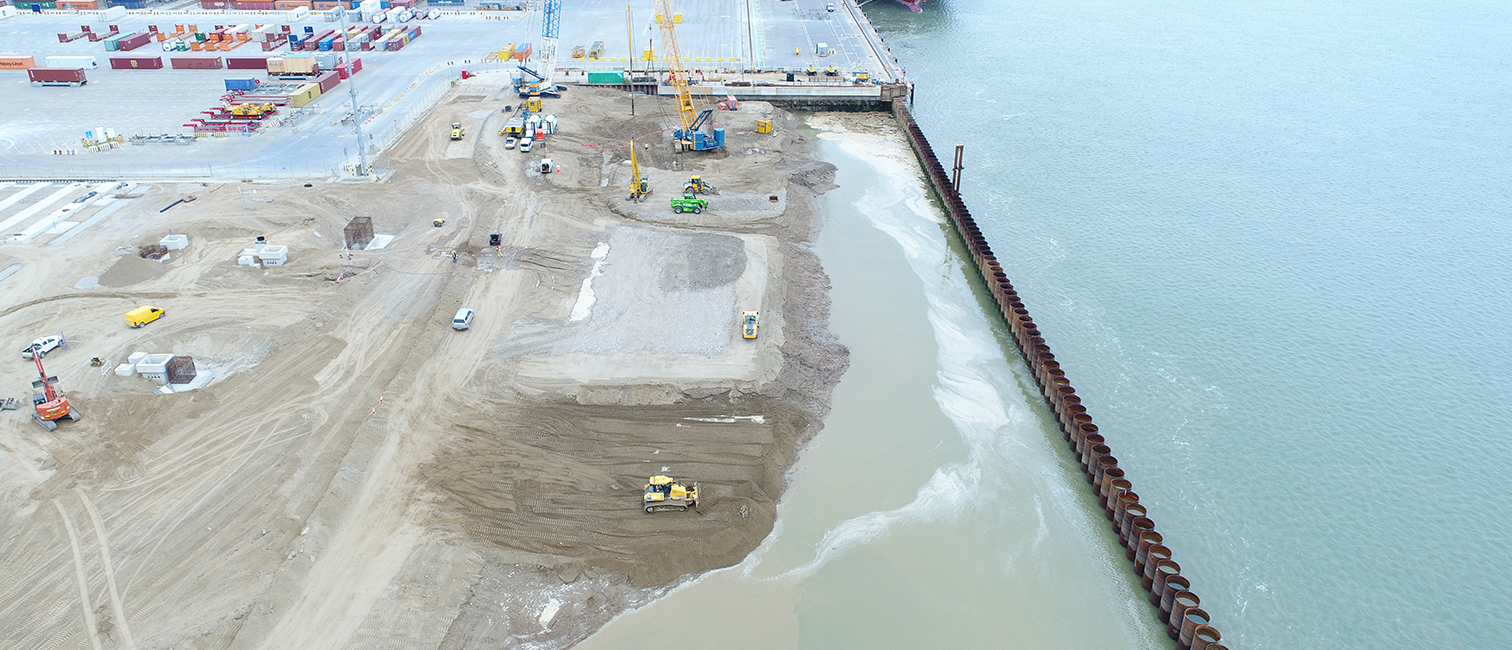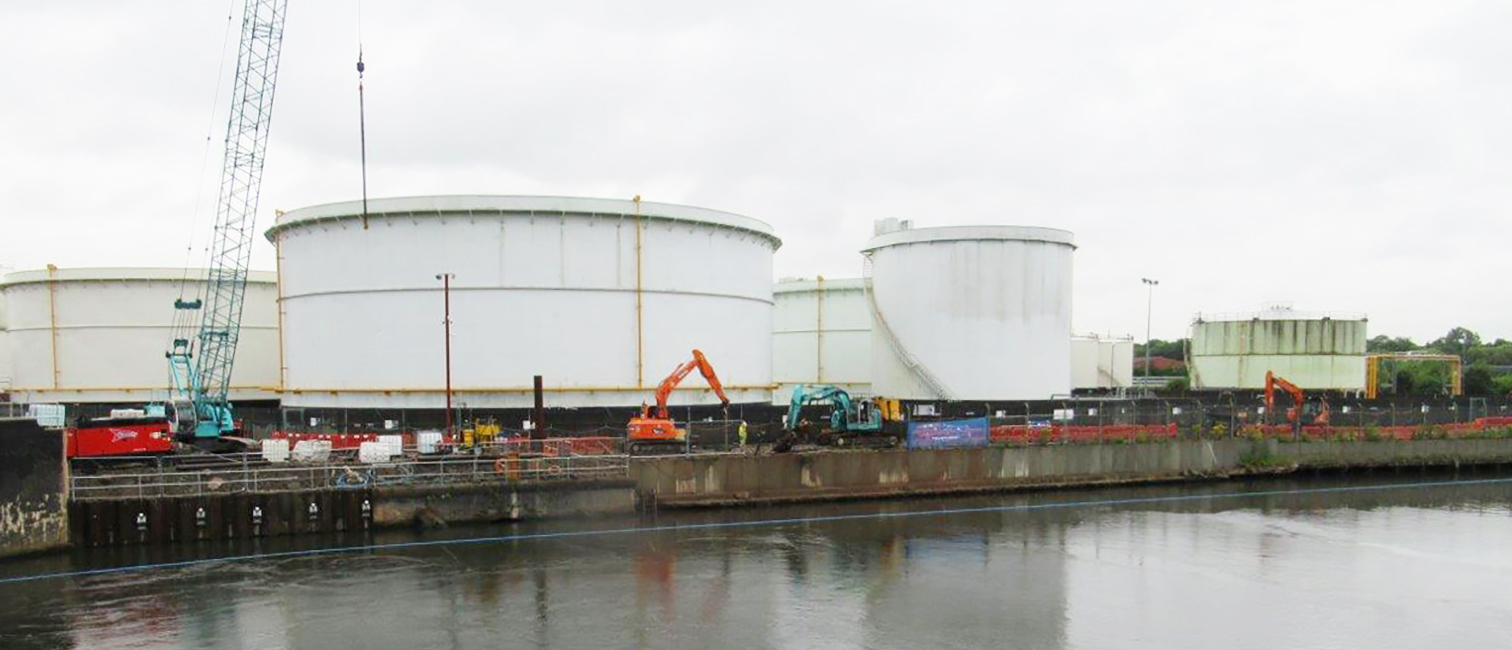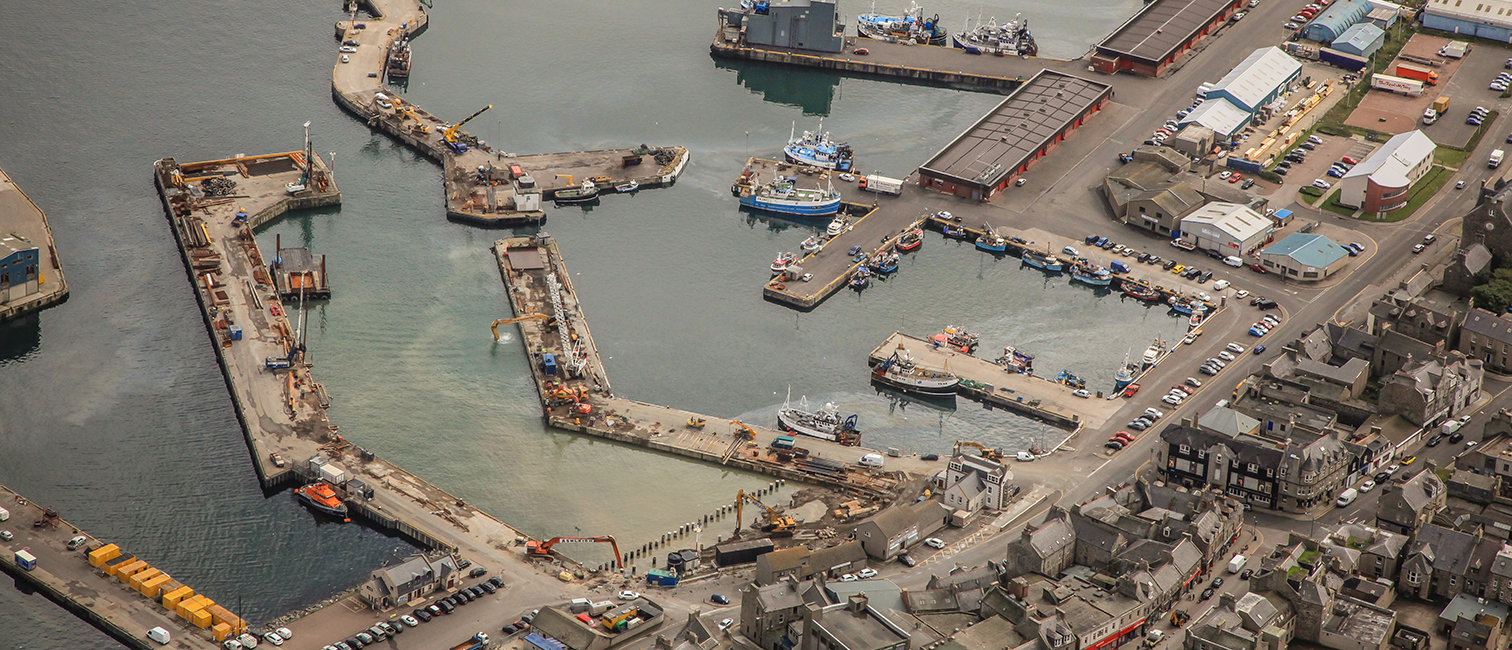
Fenton Dock was constructed between 1873 and 1875 as an expansion of Runcorn Docks
The intention was to have a direct connection to the River Mersey for ocean-going ships and to the Runcorn & Weston Canal for smaller inland waterways traffic.
Consequently, it was connected to the Manchester Ship Canal and then disconnected from the Runcorn and Weston Canal when the canal was later abandoned and infilled.
The dock is used for dry bulk cargoes unloaded using tracked excavators, portable vacuum unloaders, or directly into a fixed pipe connection for self-discharging vessels. Two bulk warehouses are directly behind the quay wall.
The quay wall was not operational following a collapse of the existing dock wall.
Our works included demolishing the damaged but still in place structure and reconstructing 110m of quay wall on Berths 7 and 9 within Runcorn Docks.
Additionally, the project included the provision of two working berths for general and bulk cargo vessels, with a draught of 7m and up to 7000t.
The remaining berths within the dock, including berths 6 and 8 directly opposite, and the landside areas remained live at all times. We worked collaboratively with the port’s operations team to deliver the project whilst ensuring minimal disruption.
The docks are impounded with water levels controlled by a series of locks and sluice gates. However, there was still a variation in levels daily depending on the port’s operational requirements and the vessel using the canal. We planned our works around Peel Ports’ operational requirements with continual communication with key stakeholders. This was particularly important during the construction of the cope beam sections as unexpected raising of water levels could have caused damage to the works.


